Where ARE all those Palestinians, the proclaimed one million of them who lived in Israel before they were ‘displaced’?
Nowhere.
Nowhere, because they never existed.
And where are all the mosques for those “1 million Palestinians”? With Muslims comes mosques. There can be no Muslim population without a large proportion of mosques. If they had been 1 million at the turn of the Century, or even in 1920 after they began immigrating to fight the British, with their rapid population growth Palestine would consist of over 40 million people today and not 4 million. That alone proves the Palestinian jihad lies. Their population is small because they are new invaders and occupiers who arrived late with an aim to commit jihad. They never lost land that was never theirs to begin with!
The British army permitted merely a few Ottomans to remain due to religious observations, the rest was Jewish. In reality according to eyewitness reports the barren British Mandate had a very small number of people living on it. Félix Bonfils (1831-1885) was a French photographer and writer who was active in the Middle East. Four years after his arrival he reported 15,000 prints of Egypt, Palestine, Syria, and Greece, and 9,000 stereoscopic-views. He traveled to the region several times and we hear of no mass population of Palestinians, which contradicts everything the Palestinians lie about to the world.
His pictures did not manage to capture any photographs of a single so-called ‘Palestinian’ who are suppose to have lost land to Jewish occupation, if we believe Arab propaganda. All he found was a few bedouines passing through and some remnants of the Ottoman Turks. Guess why? Because the “Palestinian” people as we know them today never existed.
The original philistines which the Arab jihadi’s named themselves after were a small group of lawless bandits who occupied the region near Gaza by force and died out before the birth of Christ. Islam was created over 600 years after the death of Christ and is the world’s youngest religion.
Palestinians are a fake creation ordered and constructed by the Grand Mufti Haj Mohammed Effendi Amin el-Husseini[1889-1974]. They were basically discovered (formed and invented) and originate from mass immigration from Egypt and Saudi Arabia with purpose to commit jihad. The Egyptian fighters ended up in Gaza and the Saudi fighters ended up in the West Bank according to their rout of entry.
This has been well documented by British government reports from the British Mandate and from Transjordan. It also fits the video clips and rants by Hamas leaders, who seem well aware that Palestinians are fake yet continue to argue that they ‘lost land’. We are dealing with a terrorist organization here, and not a people who became victims of loss of land.
It is also important to pay attention to the fact that once Israel had been assigned to be returned to the Jewish people in 1917, Muslims rapidly began to pour into the region from other countries with a purpose to kill them. The first conflict and killing in Israel/Palestine was initiated by the Muslims. At that point to control the population influx the British government stopped Jewish people from entering the area. So for a short span, the Muslim population suddenly became a majority. Not for natural reasons but due to their rapid invasion and occupation. Therefore, if we look at timeline of events in history we will quite easily see that the REAL occupiers of the region are the Muslims.


 Félix Bonfils (1831-1885): Birket, Israel in late 1800’s.
Félix Bonfils (1831-1885): Birket, Israel in late 1800’s. Félix Bonfils (1831-1885): Jews at the Western wall in 1870.
Félix Bonfils (1831-1885): Jews at the Western wall in 1870. Félix Bonfils (1831-1885): Yessayi Garabedian, the Armenian Patriarch in Jerusalem.
Félix Bonfils (1831-1885): Yessayi Garabedian, the Armenian Patriarch in Jerusalem.
Félix Bonfils (1831-1885): W.C. Prime 1857 in “Tent Life in the Holy Land”

Félix Bonfils (1831-1885): From Thomas Shaw, Travels and Observations Relating to Several Parts of Barbary and the Levant, London, 1767, S. 331 ff.

Félix Bonfils (1831-1885): Dome of the Rock 1875 (Where are all the “Palestinians” in their so-called displaced and occupied holiest site?). The Dome of the Rock was originally a Jewish synagogue, and later, a Christian cathedral but was conquered and occupied by Muslims who converted it to a mosque. The entire region was bathing in blood from the Muslim conquest.
Félix Bonfils (1831-1885): Israeli man riding a donkey
Félix Bonfils (1831-1885): Grinding corn in Jerusalem c. 1870

Félix Bonfils (1831-1885): Entry of Pilgrims into Bethlehem at Christmas time, Palestine c. 1870
Félix Bonfils (1831-1885): Women pray at the Western wall in Jerusalem in 1899.
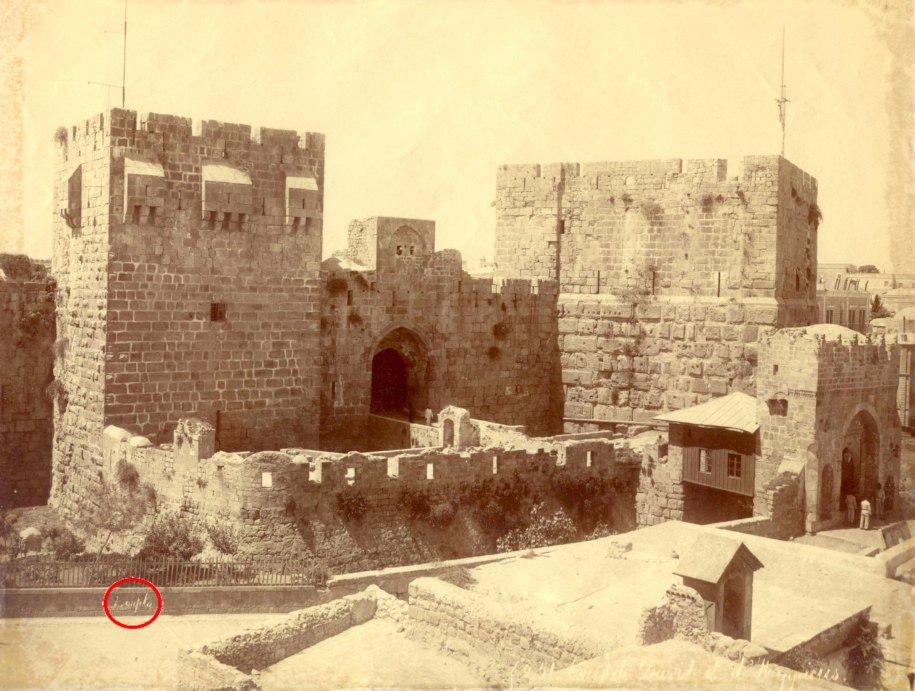

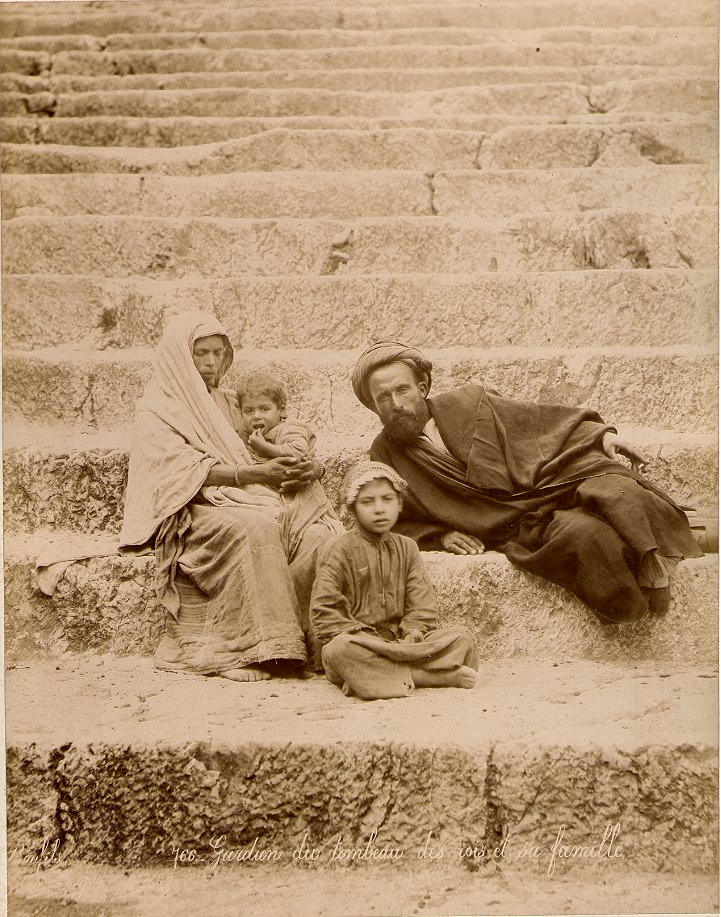
Bonfils and other historic records do mention that an occasional Arab bedouines would pass through the ‘barren land’ to reach other destinations but they would not stay. There is no mention anywhere, ever, of a “Palestinian” people with permanent settlement in the British Mandate.
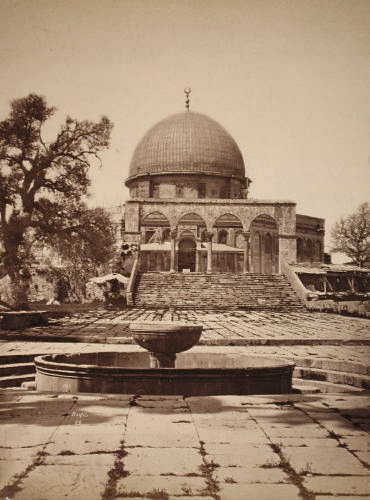

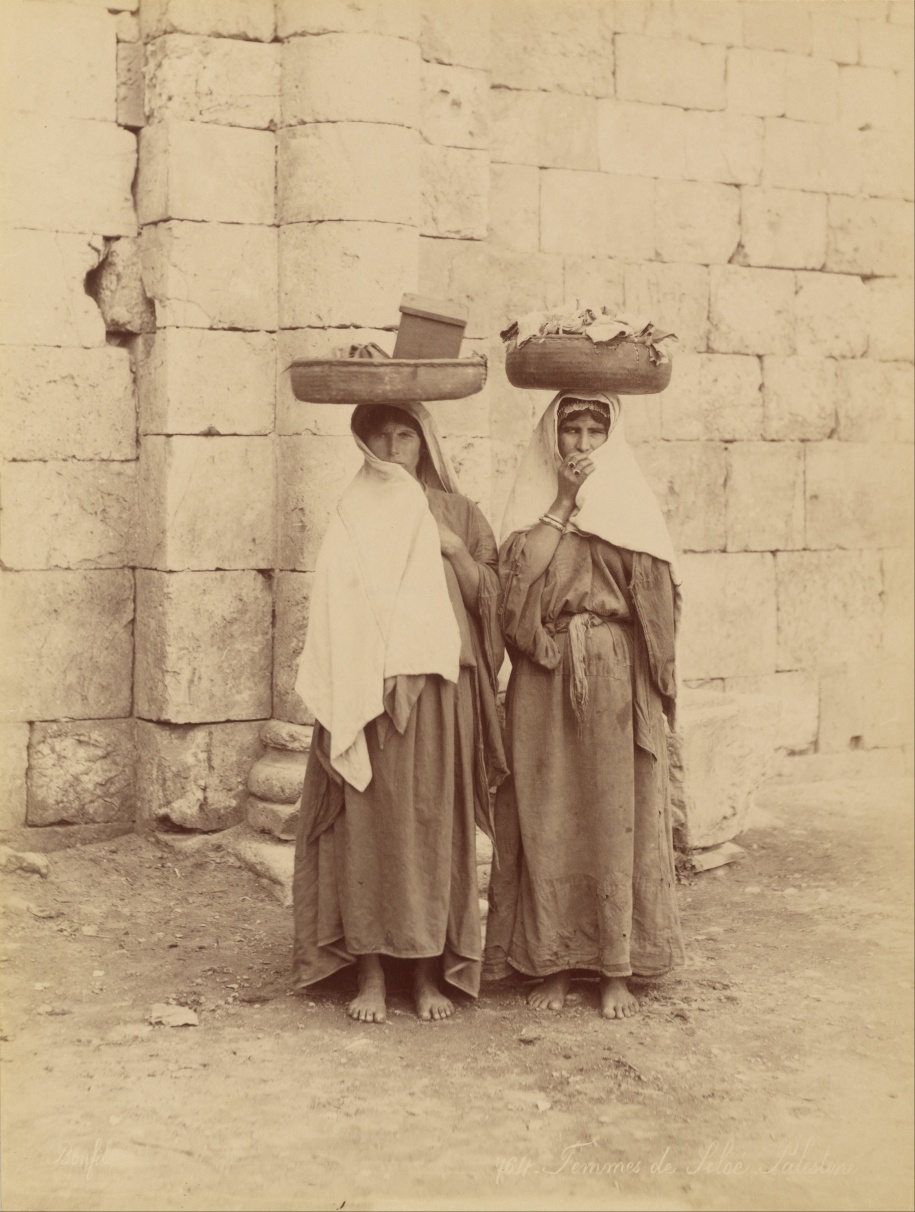
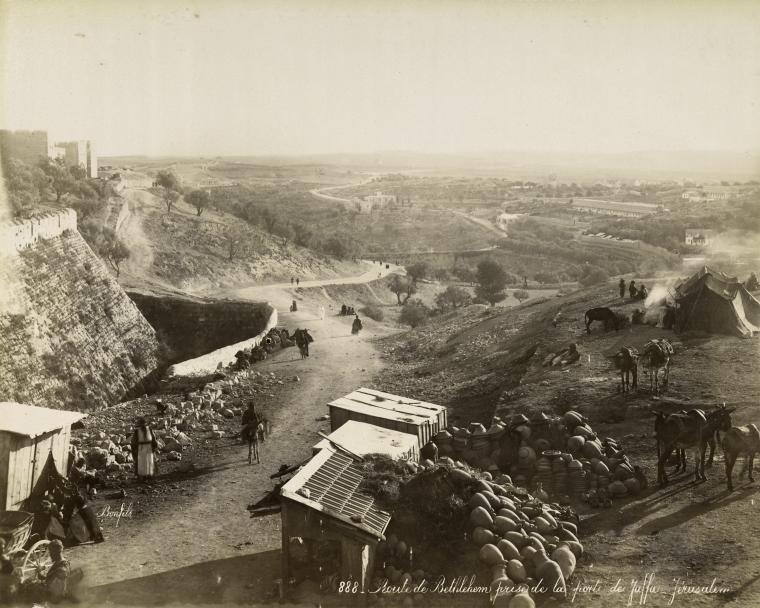
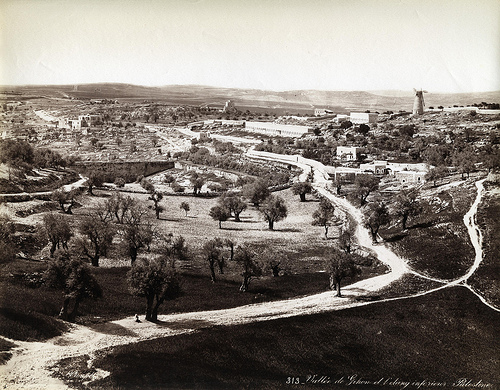
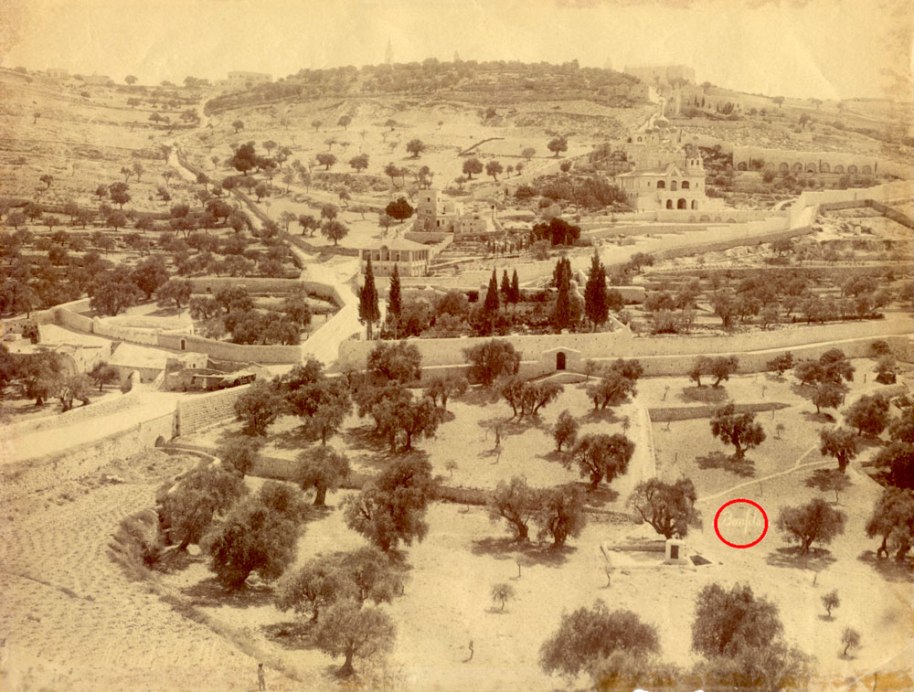
The Garden of Gethsemane, general view by F?lix Bonfils ca. 1885. This is an original vintage Albumen print on a thin sheet of paper with sepia color and slightly glossy surface, signed in the negative (within a red circle). Showing a view overlooking from the temple mount of Jerusalem towards Mount of Olives. In the center the Garden of Gethsemane and Kidron Valley. Above the garden, is the Eastern Russian Orthodox Church of St. Maria Magdalena inaugurated in 1888. On the left is the tomb of the Virgin Mary and the Church Of The Assumption. Size: 28 X 22 cm (11 x 8.5 inches). This photograph is documented in the list of Felix Bonfils Photographs (“Die Provincia Arabia”), in the Department of Rare Books, Princeton University Library, Box 6, File 25, and Photograph No. 303. (http://libweb2.princeton.edu/rbsc2/aids/msslist/maindex.htm).
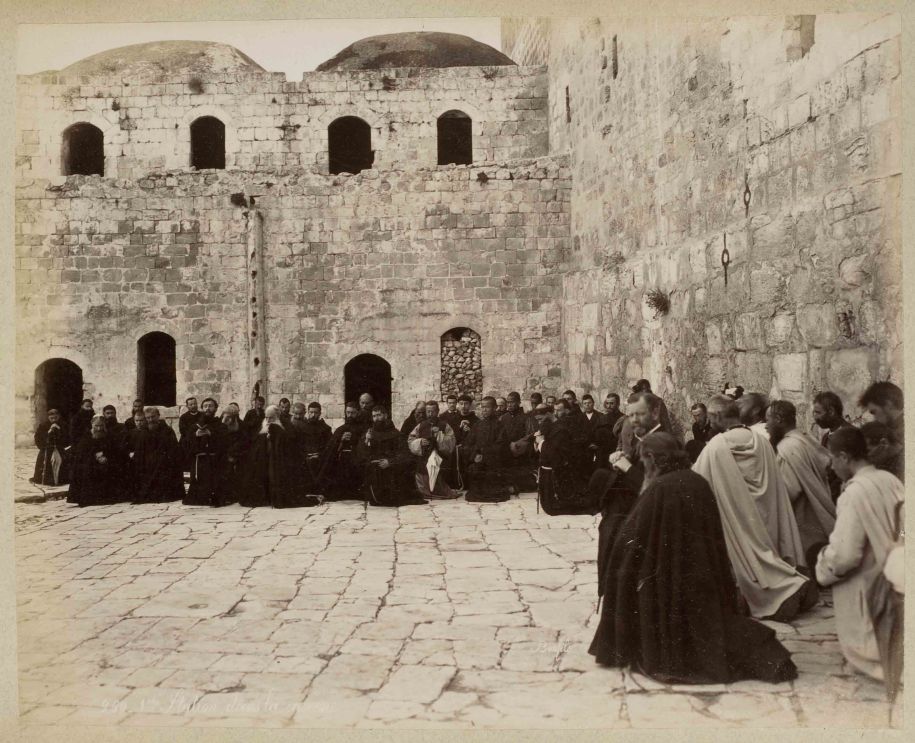
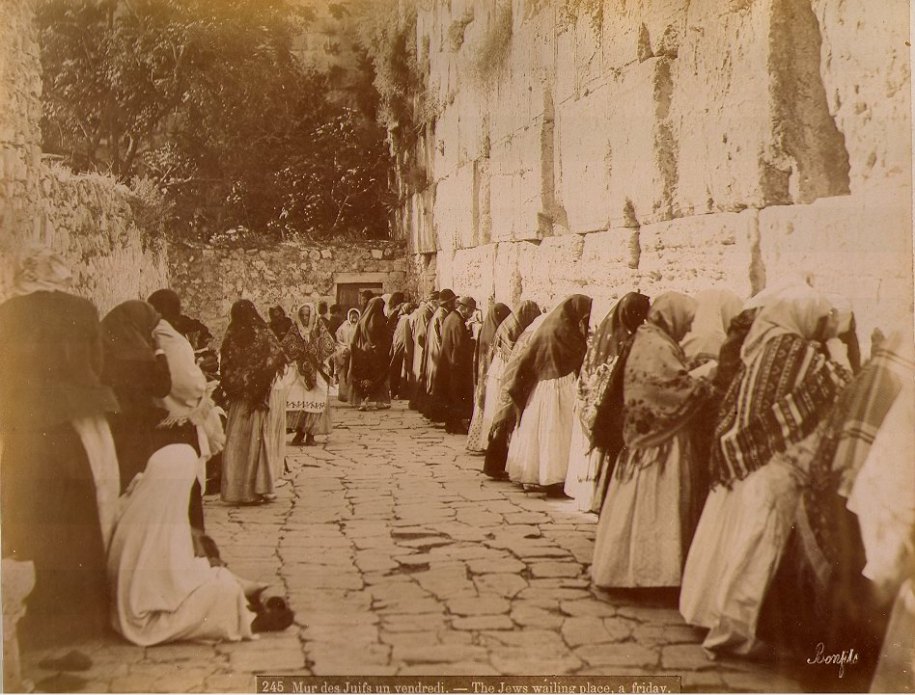
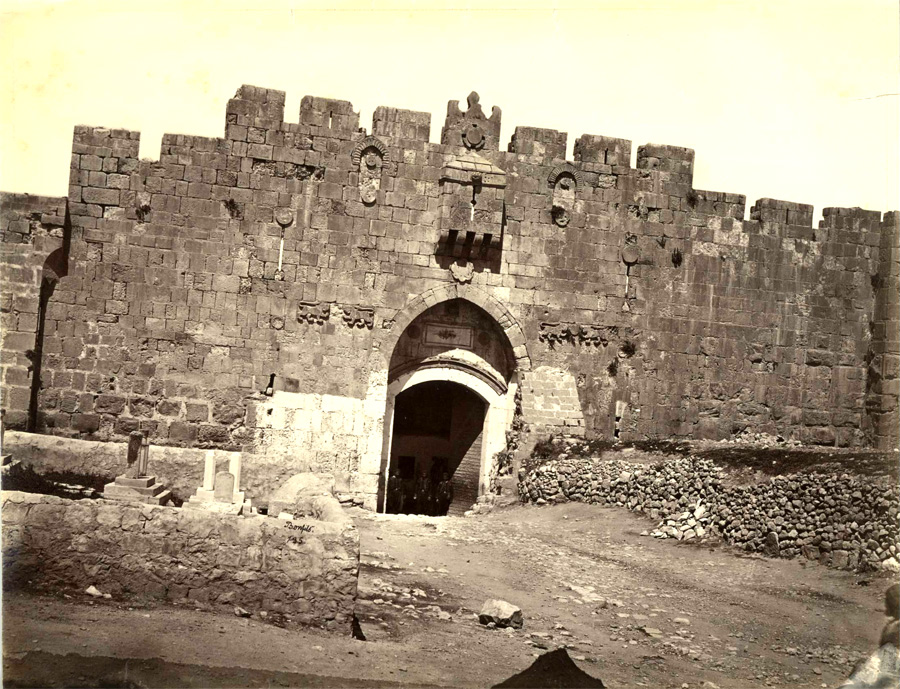
St. Stephen’s Gate Jerusalem circa 1870. This is an original vintage Albumen print on a thin sheet of paper with sepia color and slightly glossy surface, depicting the gate known as St Stephen’s in the eastern wall surrounding the old city of Jerusalem. This gate is also known as the Lions gate because of the decorations to the right and left of the gate. These are actually panthers which were the symbols of Baibars (1223 –1277 CE). Baibars was the first Mamluk Sultan of Egypt and Syria. He defeated the crusaders who came to defend their Kingdom of Jerusalem in the 8th and 9th crusades. Saint Stephen was an early follower of Jesus. He was stoned to death in the mid 4th century CE and is considered the first martyr. Tradition puts the act of stoning outside this eastern gate, hence its name. In this picture we see that the path to the gate is slightly barred by earth. This was cleared around 1880. Inside the gate are Ottoman soldiers. This is an unsigned picture in relatively good condition with only minute foxing. there are some tears to the top and top right sides.
Porte St Etienne St. Stephen’s Gate Bonfils circa 1880. This is an original vintage Albumen print on a thin sheet of paper pasted on cardboard with sepia color and slightly glossy surface, numbered 273, depicting the gate known as St Stephen’s in the eastern wall surrounding the old city of Jerusalem. This gate is also known as the Lions gate because of the decorations to the right and left of the gate. These are actually panthers which were the symbols of Baibars (1223 –1277 CE). Baibars was the first Mamluk Sultan of Egypt and Syria. He defeated the crusaders who came to defend their Kingdom of Jerusalem in the 8th and 9th crusades. Saint Stephen was an early follower of Jesus. He was stoned to death in the mid 4th century CE and is considered the first martyr. Tradition puts the act of stoning outside this eastern gate, hence its name. This is an unsigned picture by Bonfils in very good condition with no foxing.
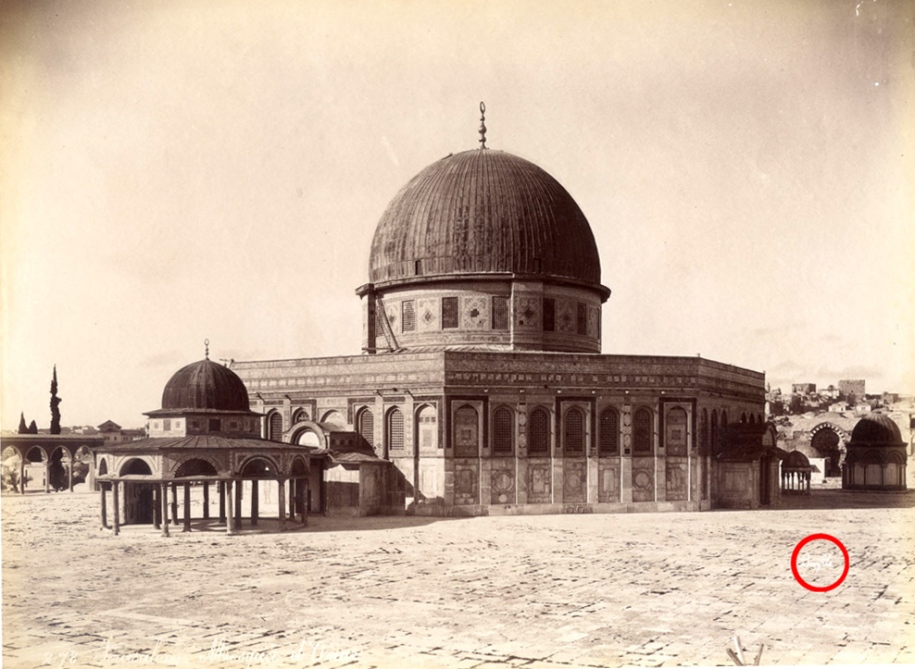
Jerusalem Mosque of Omar [a confiscated synagogue that had been converted into a mosque) by Felix Bonfils ca. 1870. This is an original vintage Albumen print on a thin sheet of paper with sepia color and slightly glossy surface, signed in the negative (within a red circle). The picture shows the Dome of the Rock that is also called the Mosque of Omar. It was built in 691 AD by the Khalif Abd El Malik on the rocky top of Mount Moriah about 600 years after the Romans destroyed the Jewish temple. It was named after the Khalif Omar who captured Jerusalem from the Byzantine Christians in 638. In close proximity to the Dome of the Rock are three Ottoman freestanding qubbas (small domed structures) these qubbas are all single-unit buildings, their domes supported by six or eight open arches. With view looking south, to the left of the Dome of the Rock is the Dome of the Chain. To the right are the small Dome of the Prophet and the larger Dome of the Miraj. Size: 28 X 22 cm (11 x 8.5 inches). This photograph is documented in the list of Felix Bonfils Photographs (“Die Provincia Arabia”), in the Department of Rare Books, Princeton University Library, Box 19, File 9, and Photograph No. 278. (http://libweb.princeton.edu/libraries/firestone/rbsc/aids/brunnow.html).
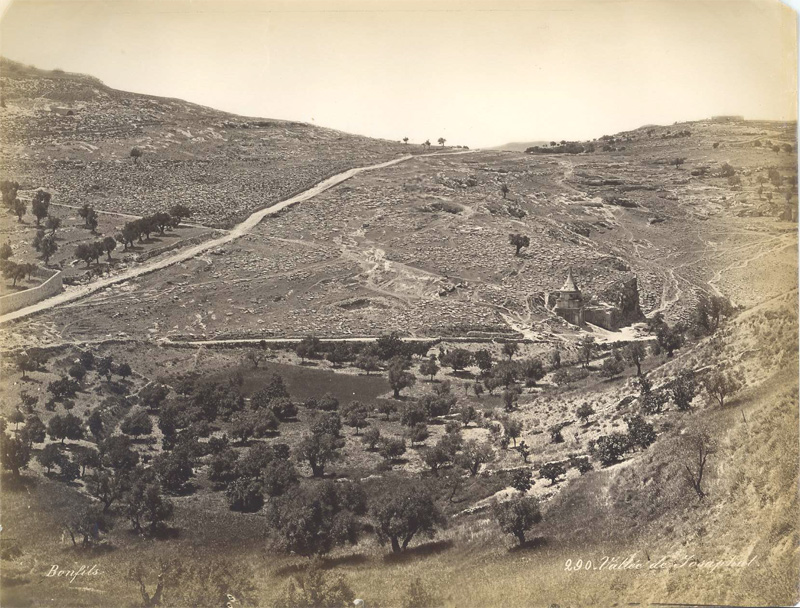
Vallée de Josaphat, by Felix Bonfils ca. 1870. Photo number 290. This is an original vintage Albumen print on a thin sheet of paper with sepia color and slightly glossy surface, signed in the negative, showing the northen entrance to the valley of Jehosaphat, or Kidron Valley. The road on the left is the road to Jerico which passes through Betheny. Above and below the road many tombstoens are visible. This is the Jewish cemetry on Mount of Olives. The monument in the middle is called Absalom’s Tomb after king David’s son. There are various monuments of this sort in the valley all dating from the 2nd or 1st centuries BCE. This photograph is documented in the list of Felix Bonfils Photographs in the Department of Rare Books, Princeton University Library, Box 6, folder 15. (http://diglib.princeton.edu/ead/getEad?id=ark:/88435/sj1391972#series1subseriesE). The prolific photographer Félix Bonfils was born on 8 March 1831 in France. In 1867 he moved to Beirut with his wife Lydie (b. 1837), and son Adrien (b. 1861) and set up a photographic studio. Bonfils published many albums focusing on specific regions or themes from various sites along the eastern Mediterranean. Bonfils died in 1885.

Jerusalem Mosque of Omar [a confiscated synagogue that had been converted into a mosque) by Felix Bonfils ca. 1870. This is an original vintage Albumen print on a thin sheet of paper with sepia color and slightly glossy surface, signed in the negative (within a red circle). The picture shows the Dome of the Rock that is also called the Mosque of Omar. It was built in 691 AD by the Khalif Abd El Malik on the rocky top of Mount Moriah about 600 years after the Romans destroyed the Jewish temple. It was named after the Khalif Omar who captured Jerusalem from the Byzantine Christians in 638. In close proximity to the Dome of the Rock are three Ottoman freestanding qubbas (small domed structures) these qubbas are all single-unit buildings, their domes supported by six or eight open arches. With view looking south, to the left of the Dome of the Rock is the Dome of the Chain. To the right are the small Dome of the Prophet and the larger Dome of the Miraj. Size: 28 X 22 cm (11 x 8.5 inches). This photograph is documented in the list of Felix Bonfils Photographs (“Die Provincia Arabia”), in the Department of Rare Books, Princeton University Library, Box 19, File 9, and Photograph No. 278. (http://libweb.princeton.edu/libraries/firestone/rbsc/aids/brunnow.html).

Vallée de Josaphat, by Felix Bonfils ca. 1870. Photo number 290. This is an original vintage Albumen print on a thin sheet of paper with sepia color and slightly glossy surface, signed in the negative, showing the northen entrance to the valley of Jehosaphat, or Kidron Valley. The road on the left is the road to Jerico which passes through Betheny. Above and below the road many tombstoens are visible. This is the Jewish cemetry on Mount of Olives. The monument in the middle is called Absalom’s Tomb after king David’s son. There are various monuments of this sort in the valley all dating from the 2nd or 1st centuries BCE. This photograph is documented in the list of Felix Bonfils Photographs in the Department of Rare Books, Princeton University Library, Box 6, folder 15. (http://diglib.princeton.edu/ead/getEad?id=ark:/88435/sj1391972#series1subseriesE). The prolific photographer Félix Bonfils was born on 8 March 1831 in France. In 1867 he moved to Beirut with his wife Lydie (b. 1837), and son Adrien (b. 1861) and set up a photographic studio. Bonfils published many albums focusing on specific regions or themes from various sites along the eastern Mediterranean. Bonfils died in 1885.
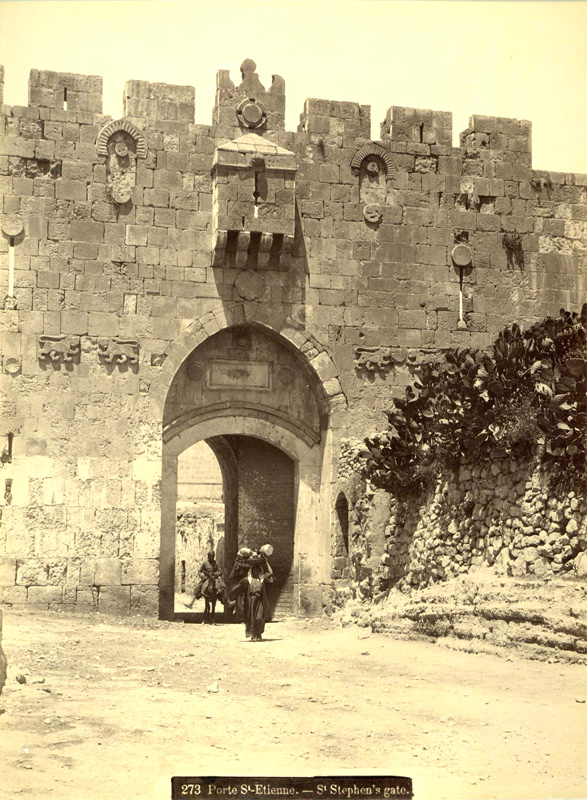
תגובה 1:
ממש מעלוה
הוסף רשומת תגובה